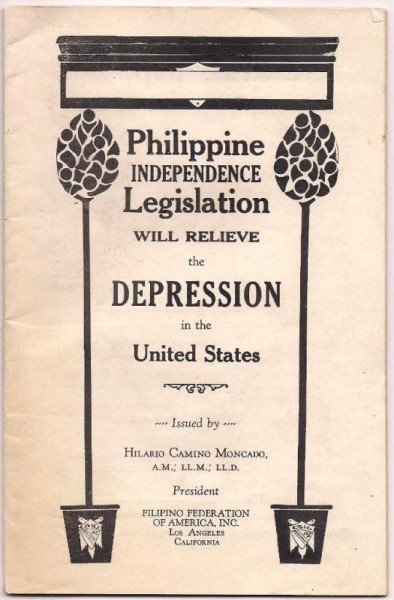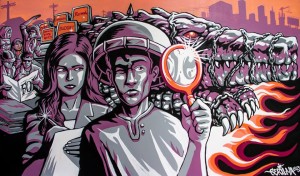Recently, Asian Cultural Experience (ACE) of Salinas, CA received a donation from the Lila Vezzola collection of a number of items related to the charismatic (and controversial) Filipino leader, Hilario Moncado, who had followers in the Salinas Valley. A select group of those followers became vegetarian, and would periodically hike up into the hills above the valley to fast and meditate. The collection includes various books and pamphlets, photos, and one print issue of the Equifilibricum Press. Pictured below is a photo of one of the pamphlets, in which Moncado expounds on how Philippine Independence will help to relieve the economic depression in the United States (1930s):

For more information, see Steffi San Buenaventura, “The Master and the Federation: A Filipino-American Social Movement in California and Hawaii” (1991).


